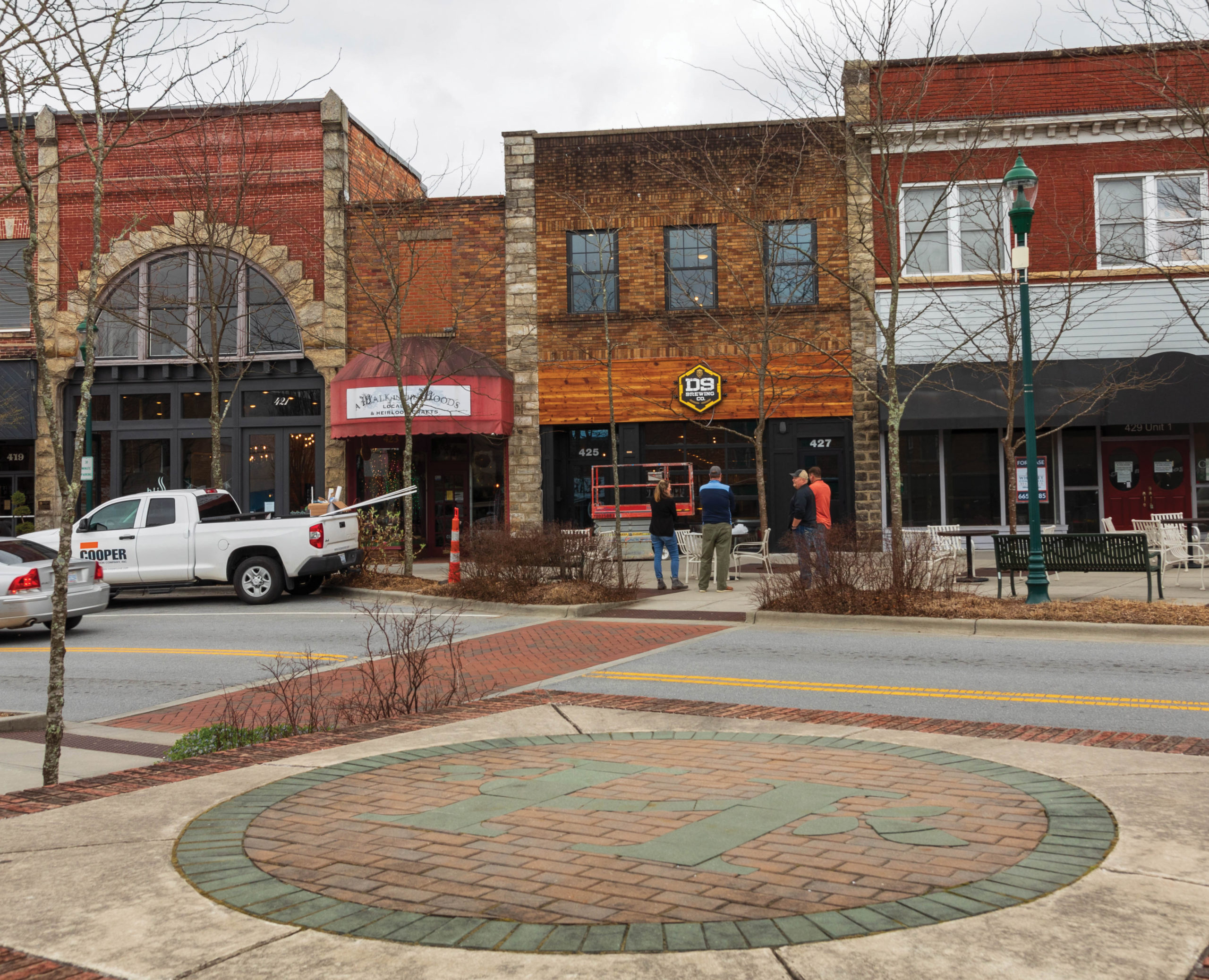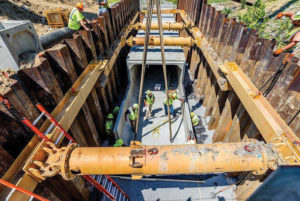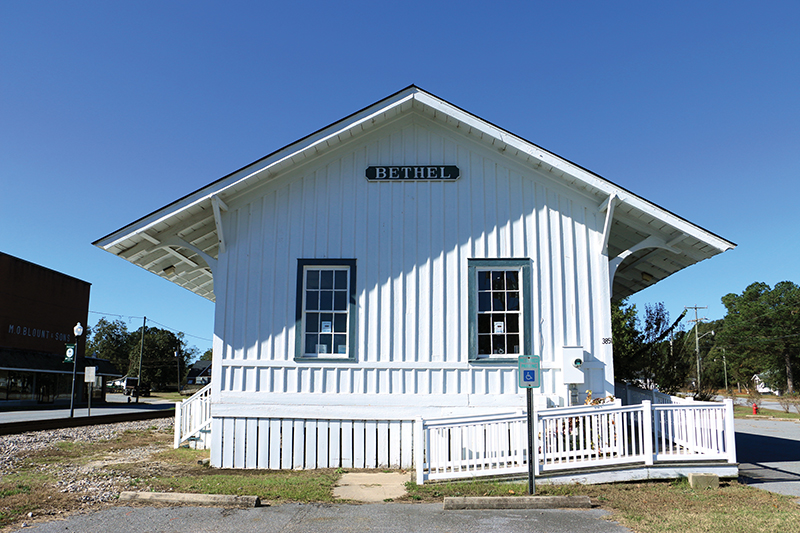How federal ARP dollars can address local water, sewer, and other infrastructure needs.
INTRODUCTION
North Carolina cities and towns will receive $1.3 billion in federal American Rescue Plan (ARP) funds in 2021 and 2022. That is a staggering number, and it encompasses just a small piece of the ARP. More funds will be sent to North Carolina counties. Still more is going to the state itself.
Never before has money flowed directly to our cities and towns like it will through the ARP, and as such, it is a generational opportunity—to both recover from the pandemic and to prosper well into the future.
These dollars come with limitations and will require strict accounting for their uses. Although continued U.S. Department of Treasury guidance is still expected related to eligible spending, the federal bill includes a broad mandate to allow investments in water, sewer, and broadband infrastructure. (It should be noted that, despite the federal law and its guidelines, North Carolina law continues to place substantial restraints on local government broadband spending.)
There are numerous examples of federally-supported infrastructure projects yielding transformational changes to our municipalities. The highlighted projects within include those that are now underway, funded through sources other than the ARP and those planned with ARP funds. In each case, substantial outside funding—similar to amounts being awarded local governments across North Carolina under the federal American Rescue Plan—made these projects possible.
There is a well-documented and clear need for water infrastructure investment in North Carolina. This issue represents the most significant threat to the sustainability of many towns, and existing state and federal funding streams are insufficient given the scale of the problem. With the addition of ARP funding, however, those funding totals more adequately address the issue. Investments in projects that have long-term impacts on residents’ quality of life, create economic opportunity, and help solve these infrastructure challenges are now possible.
REPORT FINDINGS
A Generational Opportunity
The American Rescue Plan will bring $1.3 billion to N.C. cities and towns, and it includes a broad mandate to allow investments in water and sewer infrastructure.
Local governments repeatedly demonstrate the ability to lead transformational change—case studies in Bethel, Hendersonville, and many other towns show that when properly funded and supported, local government-led infrastructure projects yield lasting results.
A Clear Need
Significant investment in water and wastewater infrastructure is needed—close to $30 billion, according to estimates.
The responsibility falls almost solely to local governments, who get just 8% of their water and sewer needs met by outside funding yet provide service to 89% of the state’s population.
Many of those same local governments are dealing with population loss in recent decades, reducing revenue and lessening their capacity to meet those infrastructure needs.
Planning for the Future
The League encourages its members to consider investments into water and wastewater infrastructure.
Additionally, the League encourages municipalities to seek partnerships and regional collaboration when planning American Rescue Plan spending.
Not only do funding projects go further when partnered, but also investments in infrastructure represents the most likely paths to a lasting funding legacy.
 A CLEAR NEED
A CLEAR NEED
In 2017, the N.C. Division of Water Infrastructure estimated that North Carolina’s water and sewer infrastructure needs over two decades would total between $17 billion and $26 billion. More recently, the University of North Carolina’s Environmental Finance Center has determined that the state’s stormwater infrastructure needs through 2034 will reach an estimated $2.76 billion, with those investments key in mitigating flooding caused by climate change and additional upstream development and growth.
To grasp the scope of one part of that need, as of 2016, 80,000 miles of public drinking water distribution lines ran through North Carolina, enough to wrap those lines around the circumference of the Earth three times over. And of that total, over 40% are constructed of materials—galvanized metal, ductile iron, or cast iron—requiring replacement in short order.
These needs arise as roughly 40% of North Carolina counties and the municipalities in them have experienced population loss in recent decades, with associated manufacturing plant closings and jobs losses through the 1980s, 90s, and early 2000s. Fewer residents means fewer rate payers and a cash shortfall. The result has been deferred maintenance needs for these systems.
 The situation was highlighted in 2019 when one Wayne County town, Eureka, saw state legislators suspend its town charter, and the state took over operations as its sewer system operations teetered on financial failure. Nearby municipalities Fremont and Goldsboro—transporters and treaters of Eureka’s wastewater—were affected by the town’s financial and operational struggles.
The situation was highlighted in 2019 when one Wayne County town, Eureka, saw state legislators suspend its town charter, and the state took over operations as its sewer system operations teetered on financial failure. Nearby municipalities Fremont and Goldsboro—transporters and treaters of Eureka’s wastewater—were affected by the town’s financial and operational struggles.
The issue has not gone unnoticed. That same year, state legislators began creating a framework to address struggling public water and sewer systems through a program designated as the Viable Utility Fund (VUF). The program is intended to identify distressed systems and work toward solutions that could be sustained over time. The legislation was passed into law in 2020.
Only a small amount of money, however, has thus far been provided by the VUF for actual infrastructure investments.
Instead, the state’s primary, ongoing programs to provide funding for local water and sewer systems investment—the Clean Water State Revolving Fund and the Drinking Water State Revolving Fund—primarily rely on zero-interest loans to our municipalities, rather than grants. Even with those constraints, the programs are meeting less than half of the demand. In the latest round of semi-annual funding, 25 of 64 project requests, or 39%, were approved. On a monetary basis, $149 million of loans and grants were approved, while $600 million was requested, or 24.9% of the total funding requests.
For fiscal years 2017 and 2018, utility users funded 93% of drinking water in North Carolina, with only 7% picked up by grants. For wastewater, those numbers are 92% and 8%.
The N.C. General Assembly has proposed putting $1 billion in federal American Rescue Plan dollars of the roughly $5 billion that came to the state in water, sewer, and stormwater projects. But as of this writing, the state budget containing those funding proposals has not been approved.
Like the direct allocations to cities and towns, the amounts moving through state coffers are significant and promise to bring about noticeable results. And yet, it does not come close to matching the need of our communities.
 PLANNING FOR THE FUTURE
PLANNING FOR THE FUTURE
From a perspective of investment and sustainable long-term growth, the League is encouraging municipalities to spend American Rescue Plan funds on projects that meet a few criteria: it should be a one-time expense; it should impact an area of significant need; and it should pay dividends for your community for decades to come.
With those criteria in mind, the League encourages municipalities to consider investment into water and wastewater infrastructure. This recommendation is made understanding the constraints of the ARP and the realities of North Carolina’s existing infrastructure challenges. Making investments in infrastructure represents one of the most likely paths to a lasting funding legacy.
Additionally, the League encourages municipalities to seek partnerships and regional collaboration when planning ARP spending. Simply put, funding goes further when partnered.
 The American Rescue Plan creates an opportunity for local governments to work collaboratively to make these much-needed transformational infrastructure investments. In fact, the federal legislation’s language and guidance explicitly promote regional investments.
The American Rescue Plan creates an opportunity for local governments to work collaboratively to make these much-needed transformational infrastructure investments. In fact, the federal legislation’s language and guidance explicitly promote regional investments.
Many of these arrangements are already taking shape around North Carolina, as evidenced by the case studies shared within this report. Even for communities that do not operate a utility themselves, other allowable uses of ARP funds include transferring funds to the local utility operator for a project in their area and completing stormwater projects.
The American Rescue Plan and its direct funding to municipalities creates an opportunity for municipalities to work individually and collectively to make transformational infrastructure investments, with the federal legislation’s language and guidance explicitly promoting these investments.














